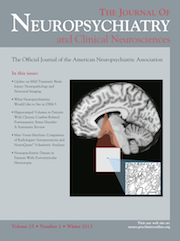The Effect of Visual and Cerebellar Exercises on Dyslexia
To the Editor: Reading disorder, or dyslexia, affects at least 5% of school-age children.1 This disorder has a genetic basis. The learning difficulties in these persons are unexpected according to age and cognitive or academic abilities.2
The exact etiology of dyslexia is unknown. Some studies have declared that the visual magnocellular system of the lateral geniculate nucleus is immature in dyslexics.3,4 This immaturity leads to a reduction in their motion sensitivity, which causes deficiency in identifying the visual order of letters and the visual form of the words.3
It should be noticed that the cerebellums of dyslexics have some anatomical, metabolic, and activation differences in some brain-imaging studies.2 There is a powerful hypothesis about this dysfunction, which claims that dysfunction of the cerebellum in dyslexics leads to motor and cognitive problems associated with reading.2 Impaired balance and time perception in studies on people with learning disability confirm the differences in cerebellum functions also.2
Based on the abovementioned evidences, one of the most important parts impaired in dyslexia is the visual magnocellular system. We hypothesized that visual stimulation in a dark room will excite the visual magnocellular system, and in this way the cerebellum will be affected too, because the cerebellum receives many inputs from various magnocellular systems.3 It is also believed that general magnocellular defects affect the cerebellum.2 By stimulating the dorsal tract of visual magnocellular system (this tract seems to gradually develop through neuro-plasticity) and by visual stimulation, visual attention and eye movements following the letters will be improved because the visual magnocellular system plays the main part in controlling these two items. It is suggested that the stimulus presents as searching and tracking a radiant object to improve visual tracking and visual attention. Adding cerebellum rehabilitation leads to 1) increasing attention;5 and 2) improving equilibrium,6 which are both impaired in individuals with learning disorder, especially in dyslexia. It is recommended that the cerebellum and vision stimulations be done simultaneously through sensory-integration exercises so that it will be more effective on functional improvement. Surely, for confirming this hypothesis, larger clinical trials are needed.
1 : Kaplan & Sadock's Synopsis of Psychiatry: Behavioral Sciences/Clinical Psychiatry, 10th Edition. Baltimore, MD, Lippincott Williams & Wilkins, 2007Google Scholar
2 : Kaplan & Sadock’s Comprehensive Textbook of Psychiatry, 8th Edition, Vol II. Baltimore, MD, Lippincott Williams & Wilkins, 2005Google Scholar
3 : The magnocellular theory of developmental dyslexia. Dyslexia 2001; 7:12–36Crossref, Medline, Google Scholar
4 : Two Cortical Visual Systems. Edited by Ingle DJ, Goodale, MA. Cambridge, MA, MIT Press.1982Google Scholar
5
6 : The role of cerebellar rehabilitation in improvement of ADHD imbalance. J Neuropsychiatry Clin Neurosci 2011; 23:E34Link, Google Scholar



